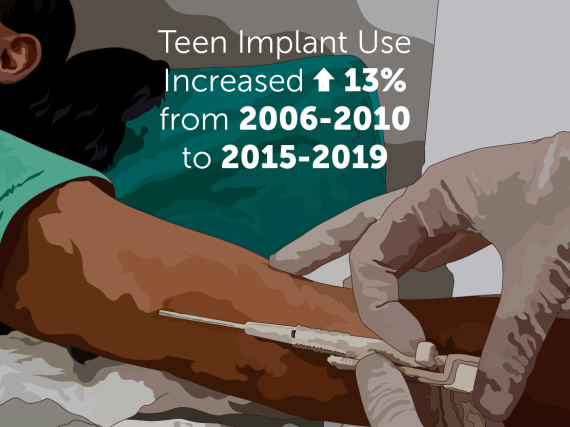The Pandemic’s Impact on Maternal Mortality in the United States
In the last 30 years, pregnancy-related deaths in the United States have more than doubled. In 2018, there were 17 maternal deaths per 100,000 live births, a maternal mortality ratio that is more than double 10 other economically comparable countries, according to a report from The Commonwealth Fund. The Centers for Disease Control and Prevention notes that around two-thirds of the country's 700 maternal deaths each year are preventable. As with many other health concerns, there are substantial disparities by race/ethnicity that reflect increased barriers to care and ongoing structural and interpersonal racism that racial/ethnic minorities face.
Sadly, the COVID-19 pandemic has only worsened the situation in the US. The overall maternal mortality rate rose 20% between 2019 and 2020, and racial/ethnic disparities persist. In fact, significant increases were observed for non-Hispanic Black and Hispanic women but not non-Hispanic white women. Among Black women, deaths increased from 44 to 55 per 100,000 live births. From January 2020 to July 2022, there were more than 300 deaths among pregnant women with COVID-19.
Multiple studies have examined the effects of COVID-19 on pregnant people. Although the overall risks of poor outcomes are low, people who are pregnant are more likely to experience severe illness compared with people who are not pregnant. This means pregnant people with COVID-19 are more likely to be hospitalized, admitted to the ICU, or need a ventilator or other special equipment to breath.
Additionally, the pandemic’s impacts on the health care system may have influenced maternal health indirectly. For example, a Vox report found that many maternity wards across the country have closed during the pandemic, forcing pregnant people to travel farther for their care. Perhaps it is not surprising, that closures have been more common in rural communities and communities with large Black and Hispanic populations.
Thankfully, clinical and public health efforts have been implemented at multiple levels to support maternal health during the pandemic. COVID-19 vaccination is safe and effective during pregnancy, reducing the risk of adverse outcomes for pregnant people and infants. Although not a perfect solution, the use of telehealth to provide maternal health care during the pandemic has been an effective strategy with high patient satisfaction. Telehealth can offer flexibility for patients who are concerned about COVID-19 exposure during clinic visits or face other barriers accessing clinic-based care (e.g., a lack of transportation or inflexible work schedules). States also now have the option to extend postpartum coverage to one year for individuals enrolled in Medicaid and the Children’s Health Insurance Program. This option, made possible through the American Rescue Plan, aligns with the Biden-Harris administration’s December 2021 call to action to reduce maternal mortality and morbidity.
Much more work however is needed to close gaps in maternal health created by the pandemic, reduce maternal mortality overall, and address racial/ethnic disparities.



